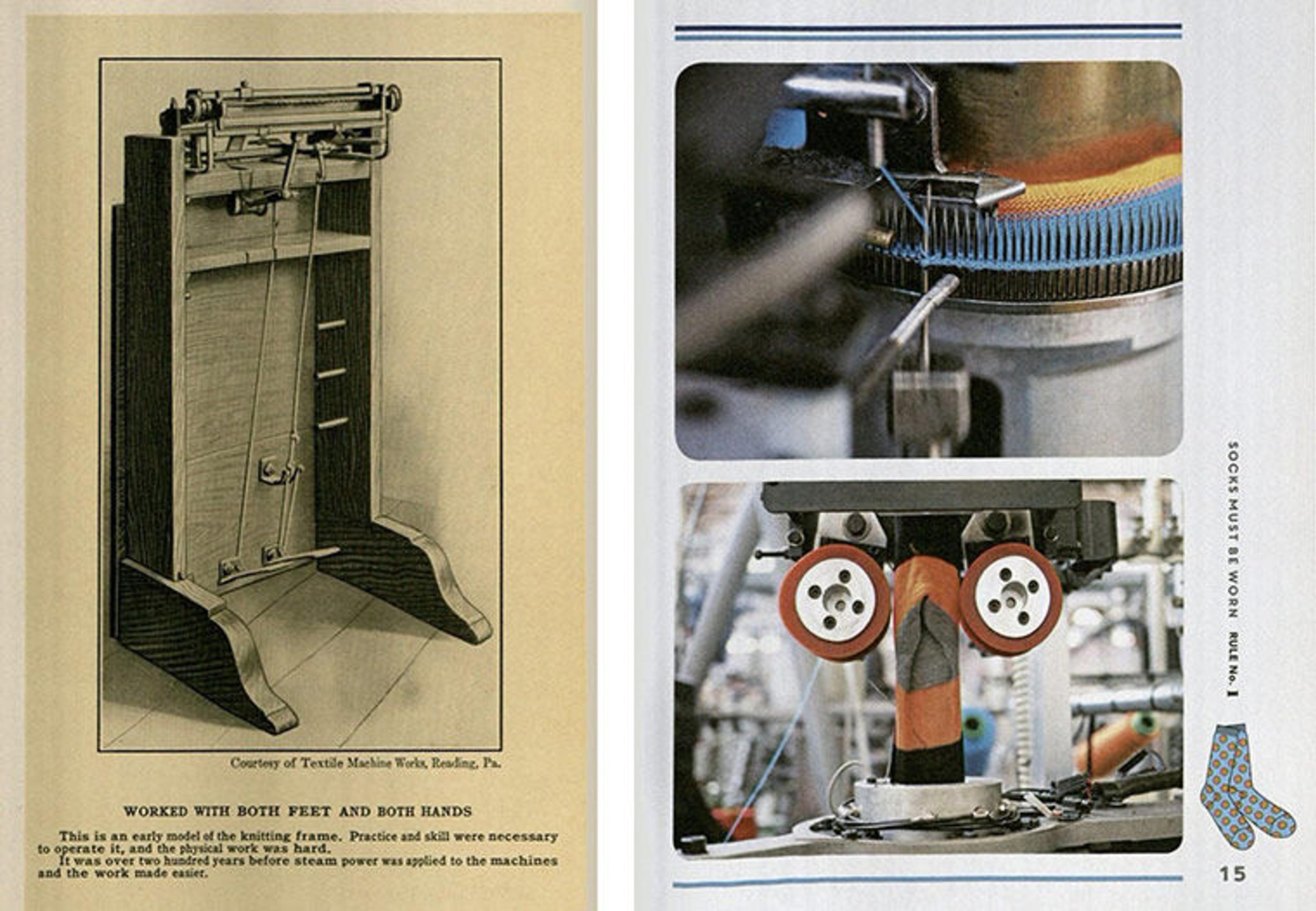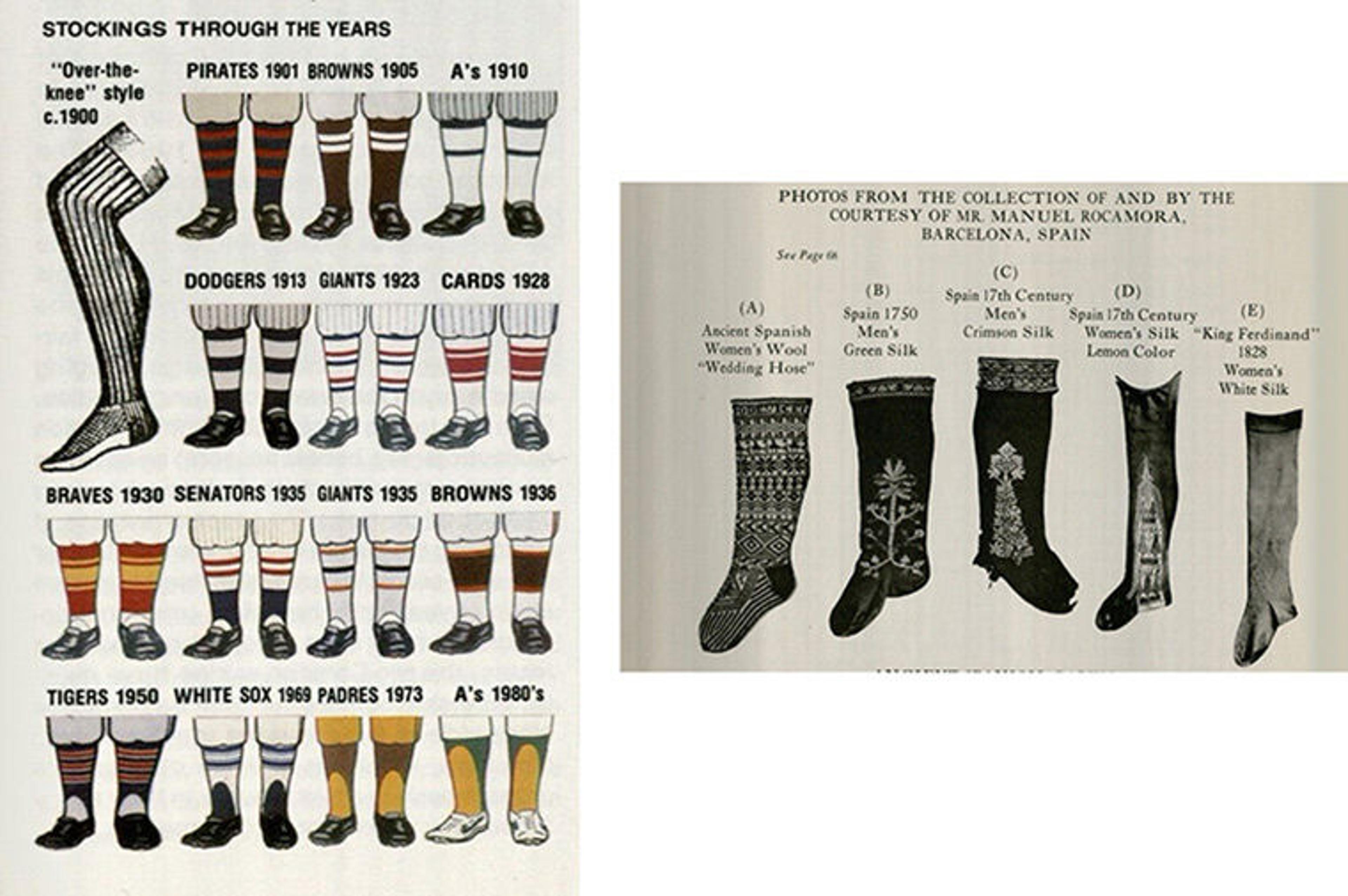
An image from the Sock Club London publication Socks: The Rule Book, 10 Essential Rules for the Wearing and Appreciation of Men's History (London: Mitchell Beazley, 2016).
While socks have been a favorite accessory of mine since the mid-1980s, hosiery, in some form, has fulfilled a need for both fashion and function for thousands of years. And whether you share my love of fancy footwear or are simply curious about the working conditions of eighteenth-century frame knitters, chances are Watson Library can help you with your research.

Left: A picture from May Hosiery Mills, Inc., The Story of Hosiery (Burlington, N.C.: May Hosiery Mills, Inc., 1931). Right: An image from Richard Rutt's A History of Hand Knitting (London: Batsford, 1987).
Methods of spinning and weaving have existed since prehistoric times, but it was not until the invention of knitting that things really got exciting for footwear. In the beginning, there was naalbinding, a single-needle technique that would evolve into hand knitting, more or less, as we know it today. Archeological evidence of naalbinding stretches from South America to Scandinavia to Africa, but hand knitting appears to have developed in Egypt and spread outward from there. By the time of Henry VIII, it was a well-developed art. Hand-knit silk stockings became a favorite of Western European royals , especially Elizabeth I, prompting the invention of machine knitting by Englishman William Lee. Unfortunately for Lee, the Queen twice denied his request for a patent for his knitting frame, and it was not until after their deaths that machine knitting really took off.

Left: An image from The Story of Hosiery. Right: An image from Socks: The Rule Book, 10 Essential Rules for the Wearing and Appreciation of Men’s History.
Though the art of hand knitting still thrives, nearly all of us today wear commercially produced socks. Structurally, today's socks and stockings have changed little since Lee first invented his knitting frame. Similarly, the function of this footwear has also remained the same. Socks have practical purposes, providing both warmth and a protective barrier between the foot and the shoe. Sometimes they are part of a uniform, and sometimes they are used as an expression of personal style.

Left: An image from Marc Okkonen, Baseball Uniforms of the 20th Century: The Official Major League Baseball Guide (New York: Sterling Pub. Co., 1991). Right: A picture from Ira J. Haskell, Hosiery Thru the Years (Lynn, Mass.: Printed by Carole Mailing Service, 1956).
Regardless of one's own sock preferences, there are plenty of books in our catalogue for anyone wishing to delve deeper into the history of hosiery and the practice of knitting. If you are able to visit the Watson Library in person, be sure to check out the strong sock game of our librarians.

Watson librarians showing off their finest footwear. Photo by Simen Kot